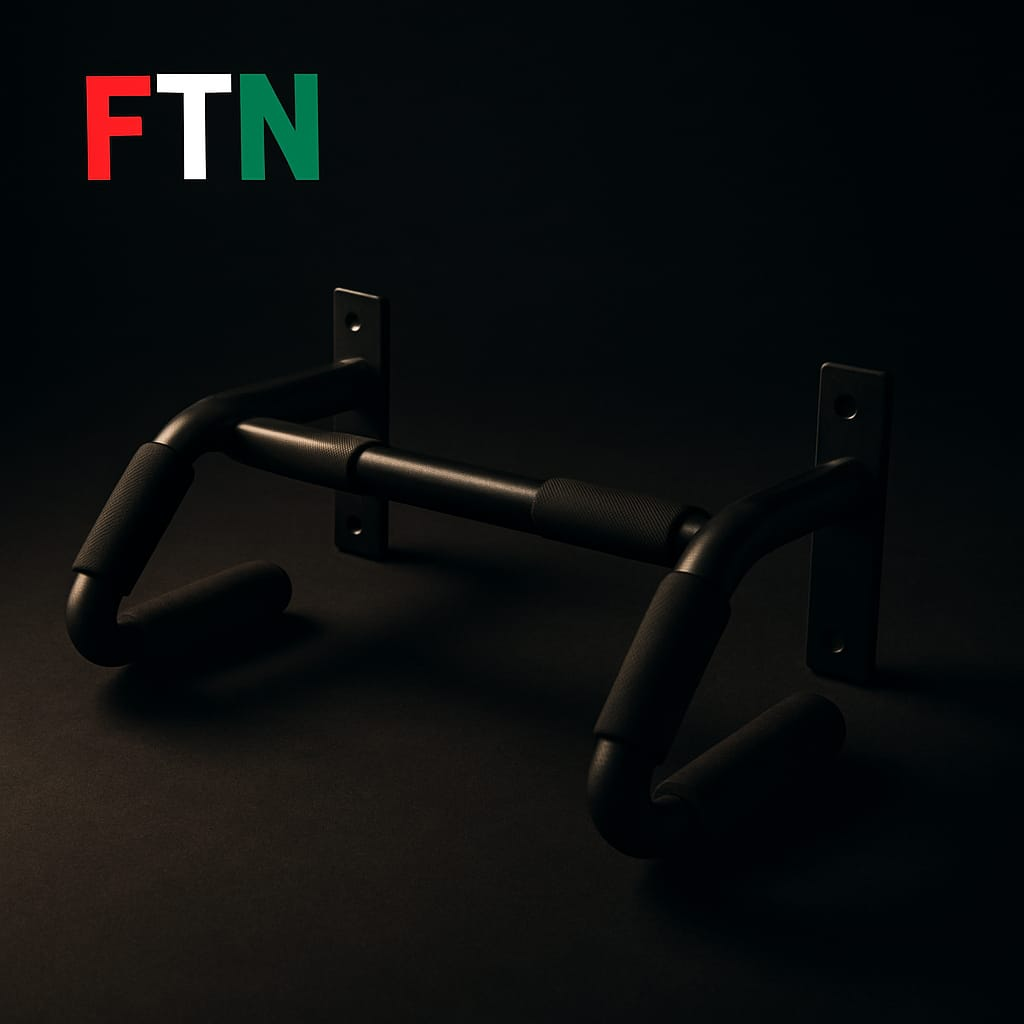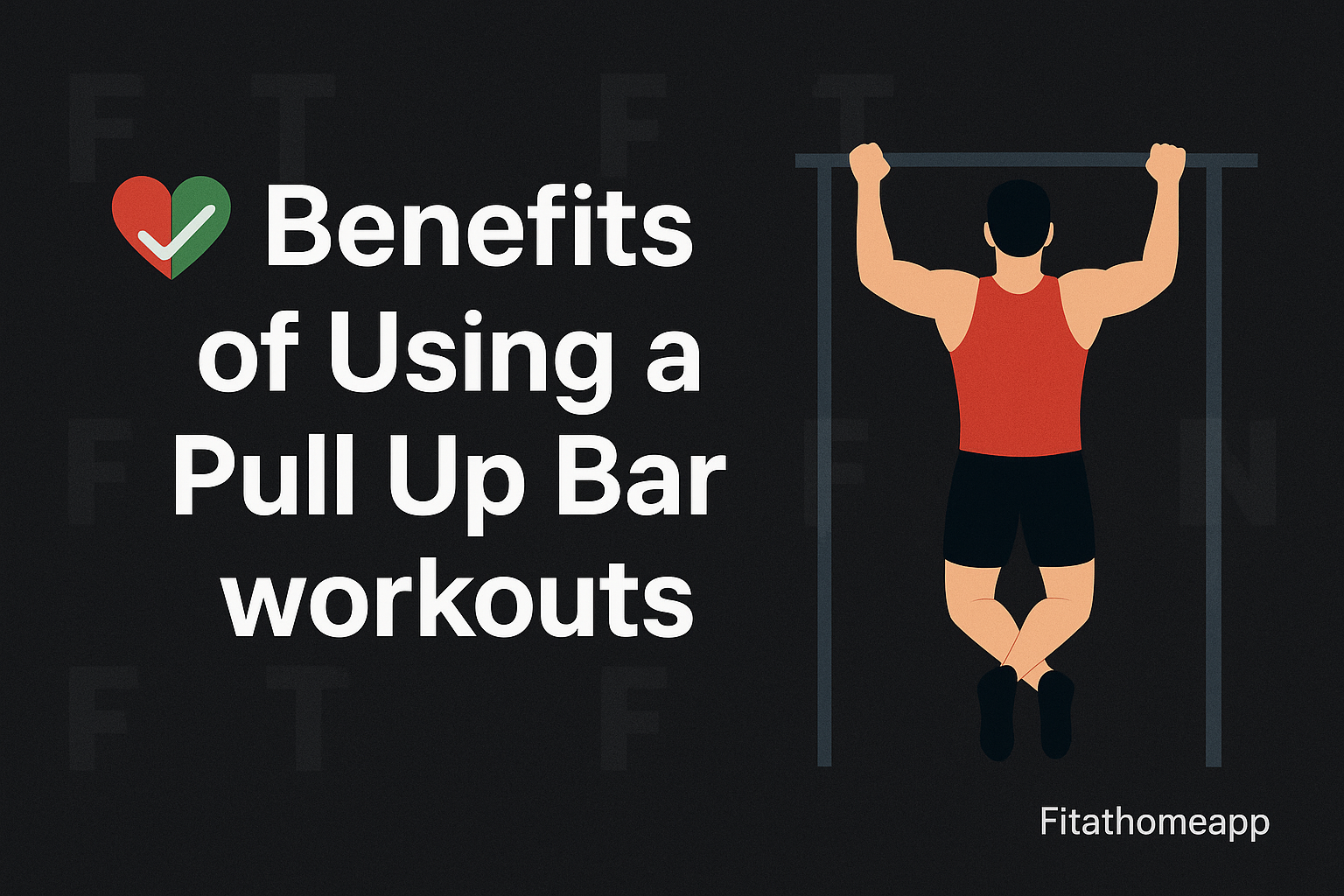🏋️ Introduction to Pull Up Bar workouts
Pull-up bars are among the most effective and affordable tools for building upper body strength at home. Whether you’re just starting your fitness journey or you’re an advanced athlete, pull-up bars provide a wide range of benefits that go beyond just muscle growth. These simple pieces of equipment help strengthen your back, arms, shoulders, and core—all from the comfort of your home.
What makes pull-up bars so valuable is their versatility. You can perform different variations of pull-ups, chin-ups, hanging leg raises, and more, targeting multiple muscle groups with one piece of equipment. They’re compact, easy to install, and ideal for anyone who wants to improve fitness without needing a gym membership or bulky machines.
As more people embrace home workouts, Pull Up Bar Workouts have become a staple in many home gyms. They promote consistency, support functional strength, and encourage healthy habits without requiring expensive gear or a lot of space. 🏠💪
🔧 Types of Pull-Up Bars
Choosing the right pull-up bar depends on your available space, fitness goals, and personal preferences. Let’s explore the four most common types:
Doorway Pull-Up Bars
These bars are designed to fit snugly over a standard doorframe. They’re easy to install and remove, making them perfect for small spaces or shared living environments. While they’re great for basic exercises, they may not be ideal for more advanced moves due to limited stability.Wall-Mounted Pull-Up Bars
Installed directly into a wall, these bars offer more stability and can support heavier weight. They’re ideal for serious training, especially if you plan on doing muscle-ups or weighted pull-ups. However, installation requires tools and permanent wall drilling.Free-Standing Pull-Up Bars
These are self-supporting structures that don’t require mounting. Many models also include dip stations or push-up handles, making them multi-functional. They take up more space but are excellent for those with a dedicated home gym area.Portable Pull-Up Bars
Great for people on the go, portable bars are lightweight and easy to carry. You can set them up indoors or outdoors, making them ideal for travelers or outdoor workout enthusiasts. However, they often have a lower weight capacity and may not be suitable for heavy-duty use.
✅ Benefits of Using a Pull Up Bar workouts
Pull-up bars aren’t just about building muscle. They offer a full range of benefits that support overall fitness:
Upper Body Strength
Pull-ups work your back, shoulders, chest, and arms all at once. Regular use leads to visible muscle development and functional strength.Core Activation
While lifting your body, your core is constantly engaged, helping you build stability and improve posture.Grip Strength
Holding your body weight helps strengthen your forearms and grip, which is beneficial for other lifts like deadlifts or kettlebell swings.Fat Loss & Metabolism Boost
Compound movements like pull-ups burn calories and activate large muscle groups, helping boost your metabolism over time.Convenience & Accessibility
With a pull-up bar at home, you eliminate excuses. A quick set of pull-ups can fit into even the busiest schedules.
🛠️ How to Set Up a Pull-Up Bar at Home
Installing a pull-up bar safely is key to avoiding injury. Here are some general tips:
Doorway Bars: Make sure your doorframe is sturdy. Test the bar’s grip by gently pulling on it before performing any full repetitions.
Wall-Mounted Bars: Use a stud finder to locate solid wall studs. Install with proper tools and ensure the bar is completely level.
Free-Standing Bars: Place them on even surfaces and avoid slippery floors. Make sure all parts are securely tightened.
Portable Bars: Follow manufacturer instructions and test stability each time you move or reassemble the bar.
No matter the type, always check your pull-up bar regularly for wear and tear, especially screws, bolts, and padding.
🏃♂️ Pull-Up Variations for All Fitness Levels
Here are some popular exercises you can perform on a pull-up bar:
Standard Pull-Up (Overhand Grip): Focuses on your lats and upper back.
Chin-Up (Underhand Grip): Targets your biceps more.
Negative Pull-Ups: Great for beginners; lower yourself slowly from the top position.
Hanging Leg Raises: Strengthen your core and improve stability.
Wide-Grip Pull-Ups: Increase difficulty and target the outer back muscles.
Muscle-Ups: A more advanced movement combining a pull-up and dip in one.
Start with 3 sets of as many reps as you can do with proper form. Over time, increase the number of reps or add difficulty by wearing a weighted vest or using slower tempos.
📅 Creating a Pull-Up Bar Routine
A well-rounded pull-up bar routine can help you progress consistently. Here’s a basic weekly plan:
Beginner (3 Days/Week):
3 Sets of Assisted Pull-Ups (or Negative Pull-Ups)
3 Sets of Hanging Knee Raises
3 Sets of Incline Push-Ups
Intermediate (4 Days/Week):
4 Sets of Pull-Ups
3 Sets of Chin-Ups
3 Sets of Hanging Leg Raises
3 Sets of Push-Ups
Advanced (5 Days/Week):
5 Sets of Weighted Pull-Ups
3 Sets of Muscle-Ups
3 Sets of Toes-to-Bar
3 Sets of Dips (if you have access to a station)
Make sure to take at least one rest day and stretch your shoulders and arms after each session to prevent injury.
🧠 Tracking Progress and Staying Motivated
Progress can be tracked by the number of reps, sets, or by mastering harder variations. Here are a few tips:
Keep a fitness journal or app log 📒
Set monthly goals (e.g., 5 unassisted pull-ups)
Record videos to check form and see improvements
Celebrate small wins to stay motivated 🎯
Consistency matters more than perfection. Even one or two reps a day can make a difference over time.
💡 Final Thoughts
Pull-up bars are simple, powerful, and incredibly effective tools for home fitness. Whether you’re working on building muscle, improving endurance, or just getting into shape, adding a pull-up bar to your space can transform your routine. They’re compact, affordable, and provide a variety of exercises for all levels.
In a world full of complicated workout machines and expensive memberships, pull-up bars offer a refreshing return to the basics. So if you’re ready to take your upper body strength to the next level—without leaving your home—this is the tool to get started with.
Stick with it, stay consistent, and let the pull-up bar be your partner on your journey to a stronger, healthier you! 💥💪
Buy Now on Amazon“As an Amazon Associate I earn from qualifying purchases.”
My Honest Review of the Video :
Title: 17 Pull-Up Bar Exercises for Beginners and Pros
This video does a fantastic job showcasing a wide variety of pull-up bar exercises that target different muscle groups in the upper body and core. It is clear, well-paced, and visually engaging — making it suitable for both beginners who want to build confidence and advanced users looking to expand their routine.
Pros:
Demonstrates excellent exercise variety (pull-ups, hanging raises, isometrics, etc.).
No unnecessary talking — straight to the point.
High-quality visuals and lighting.
Movements are performed with clean form, making it easy to replicate.
🍽️ The Role of Proper Nutrition in Pull Up Bar Workouts
While consistent training on a pull-up bar is essential for building strength and achieving visible progress, your results will always be limited without the support of proper nutrition. Just like a car needs quality fuel to run efficiently, your body needs the right nutrients to recover, grow, and perform at its best—especially when engaging in demanding exercises like pull-ups.
Pull Up Bar Workouts primarily target the upper body muscles—particularly the back, arms, shoulders, and core. These exercises create small tears in your muscle fibers, which the body repairs and strengthens during recovery. This process heavily depends on your nutritional intake. Without adequate protein, for example, muscle repair is slowed, and you may find it harder to increase your reps or improve performance over time.
A balanced diet rich in protein, healthy fats, and complex carbohydrates is key. Protein sources such as lean meats, eggs, Greek yogurt, legumes, or plant-based alternatives help rebuild muscle tissue. Carbohydrates, often misunderstood in fitness circles, are essential for providing the energy your body needs to power through pull-up sets—especially if you’re doing high-volume or weighted variations. Think oats, brown rice, fruits, and vegetables. Healthy fats, like those from nuts, seeds, avocados, and olive oil, support hormone balance and joint health, both of which are crucial for injury-free training.
Hydration is equally important. Pull-up exercises can be deceptively intense, and sweating—even during short home workouts—can lead to water and electrolyte loss. Drinking enough water before and after your workout supports muscle function, joint lubrication, and overall endurance. Consider adding a pinch of sea salt or an electrolyte tablet if you’re training hard or sweating a lot.
Moreover, timing your meals can make a big difference. Eating a small, balanced meal 1–2 hours before training can provide the energy needed to perform better and reduce fatigue. Post-workout meals, on the other hand, should focus on recovery—ideally consumed within 30–60 minutes of finishing your session. A classic combo like grilled chicken with sweet potato or a protein shake with a banana can do wonders for recovery.
If your goal with pull-up bar training is fat loss, nutrition becomes even more important. You’ll want to maintain a slight caloric deficit while still providing your body with enough nutrients to preserve muscle mass. In this case, focus on nutrient-dense foods—leafy greens, lean proteins, whole grains, and healthy fats—and avoid empty calories from processed snacks or sugary drinks.
Finally, don’t underestimate the role of consistency. Just like with your pull-up bar routine, sticking to a well-planned eating strategy over time is what delivers real, lasting results. Proper nutrition not only fuels your workouts but accelerates your progress, improves recovery, and helps prevent injuries.
In short, if you want to get the most out of your Pull Up Bar Workouts, your kitchen matters just as much as your training space. Combine smart training with smart eating, and you’ll build a body that’s not only stronger—but healthier and more resilient, too.


